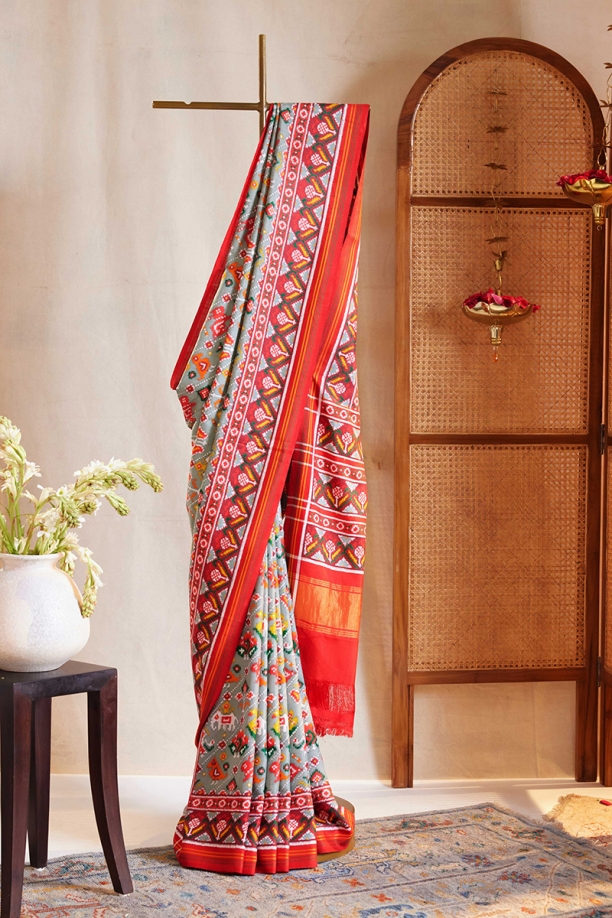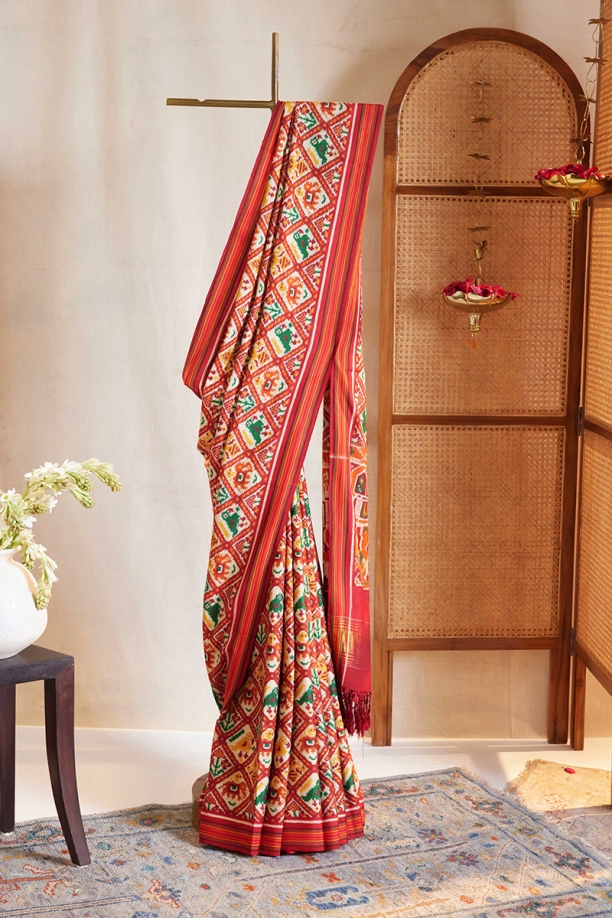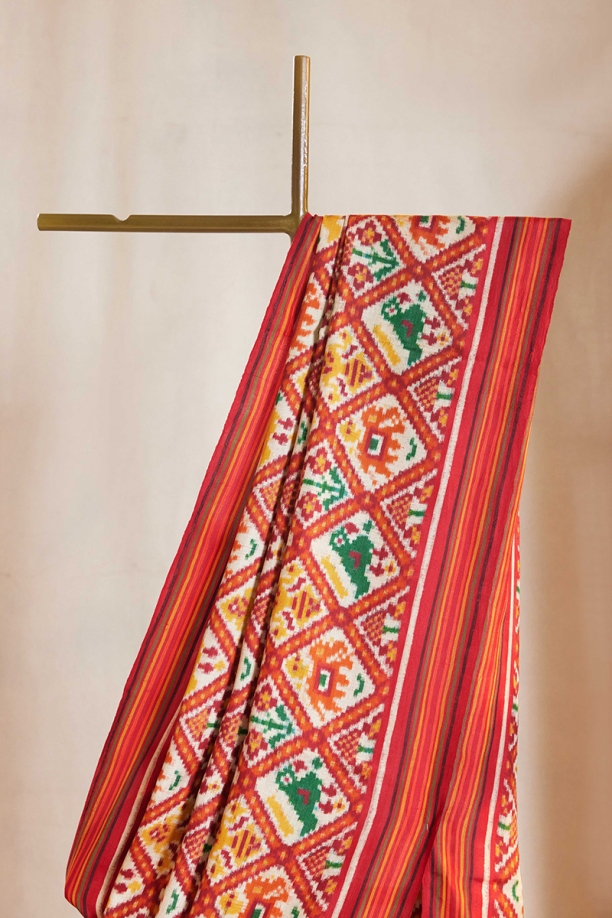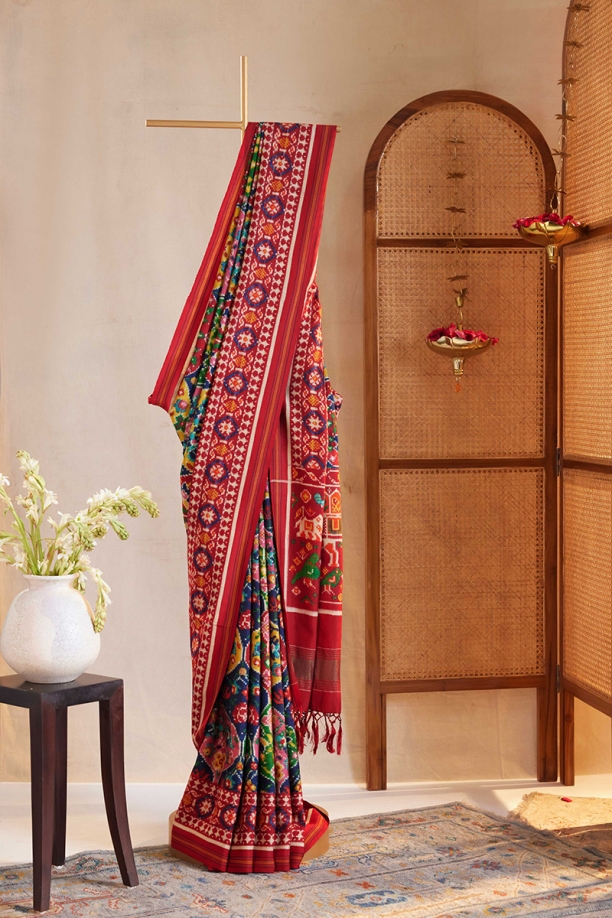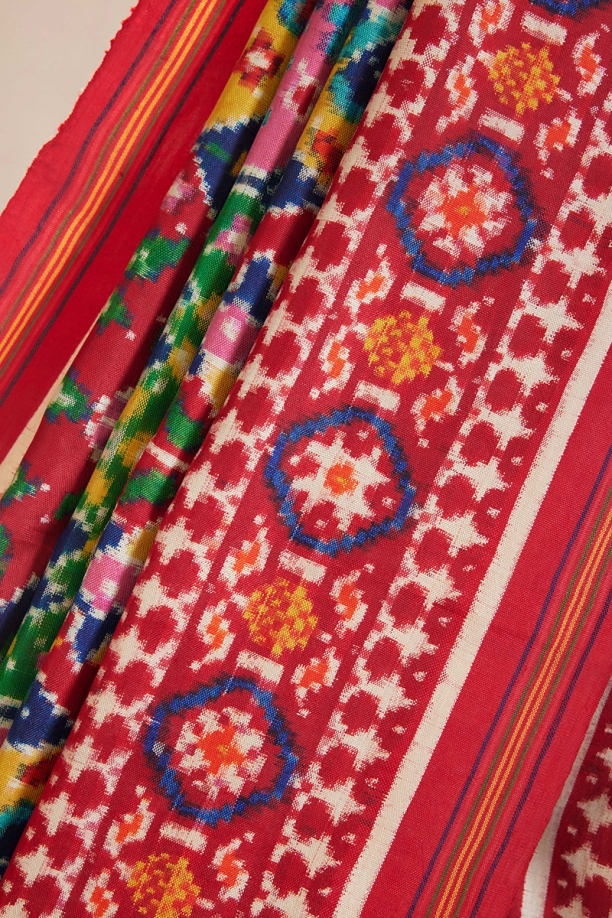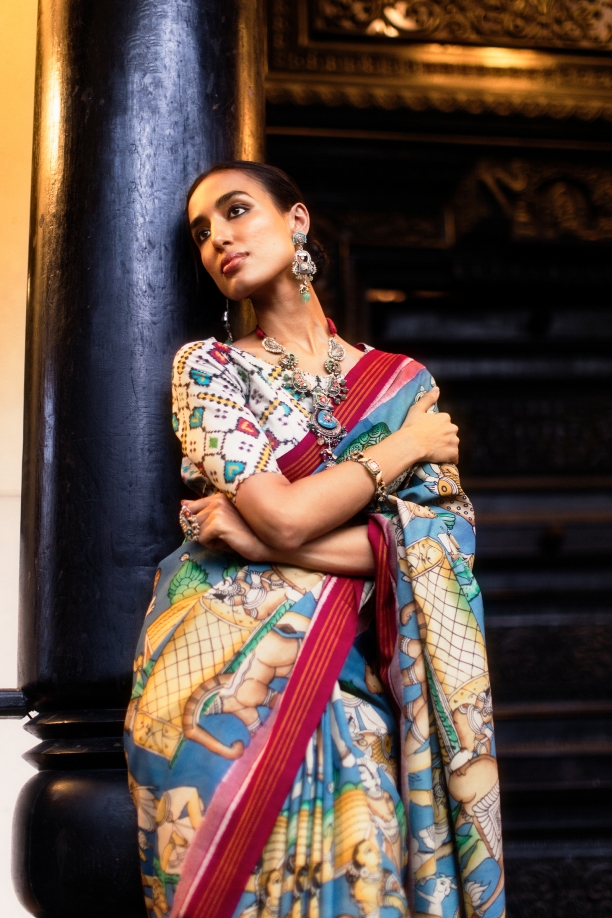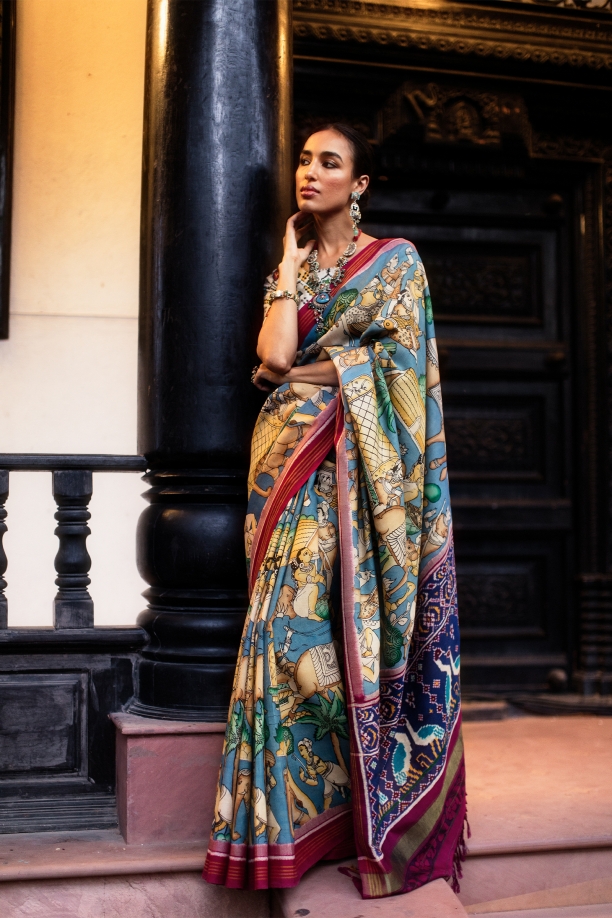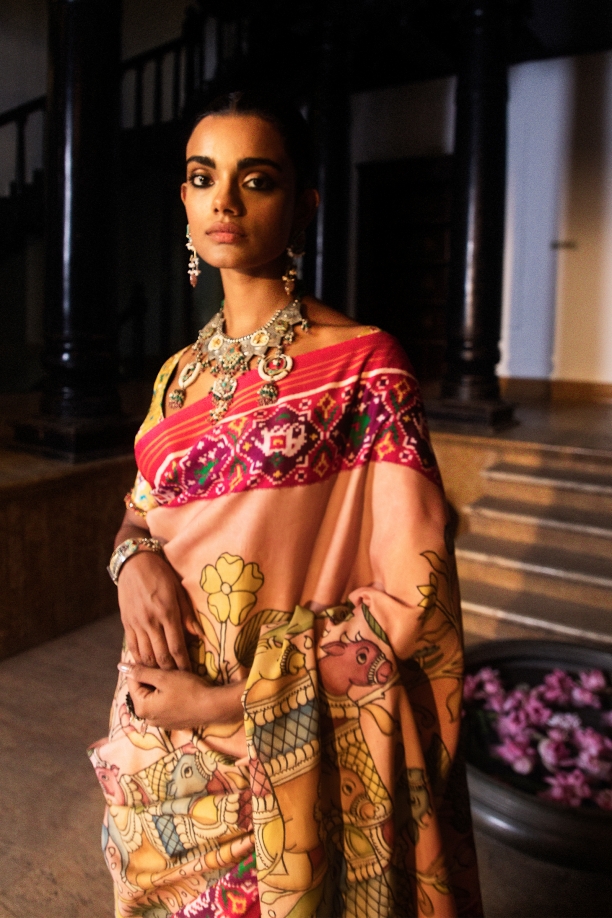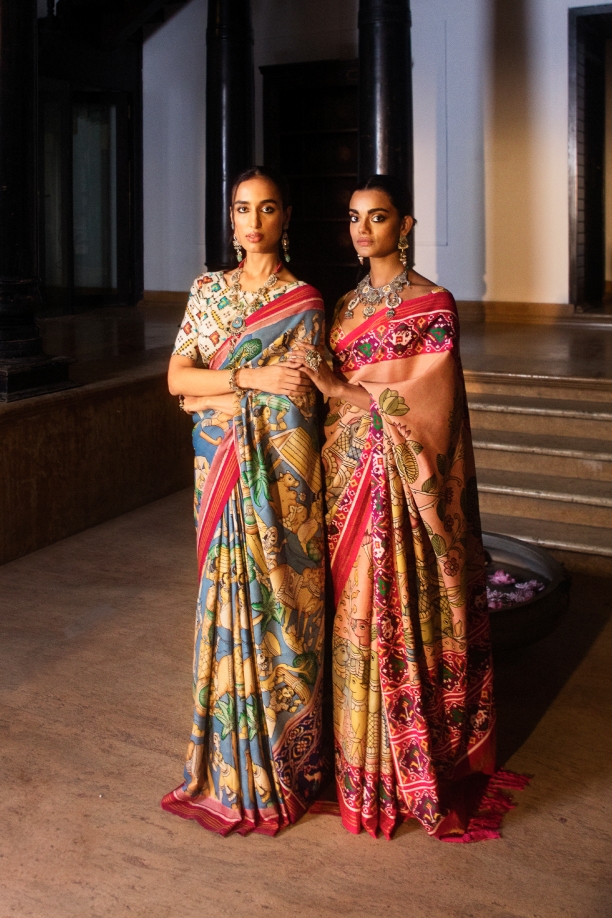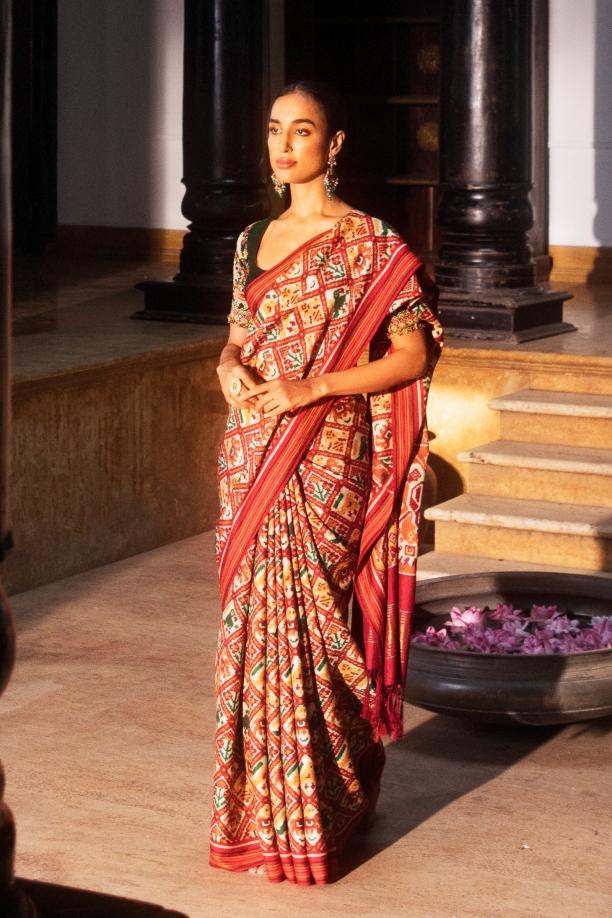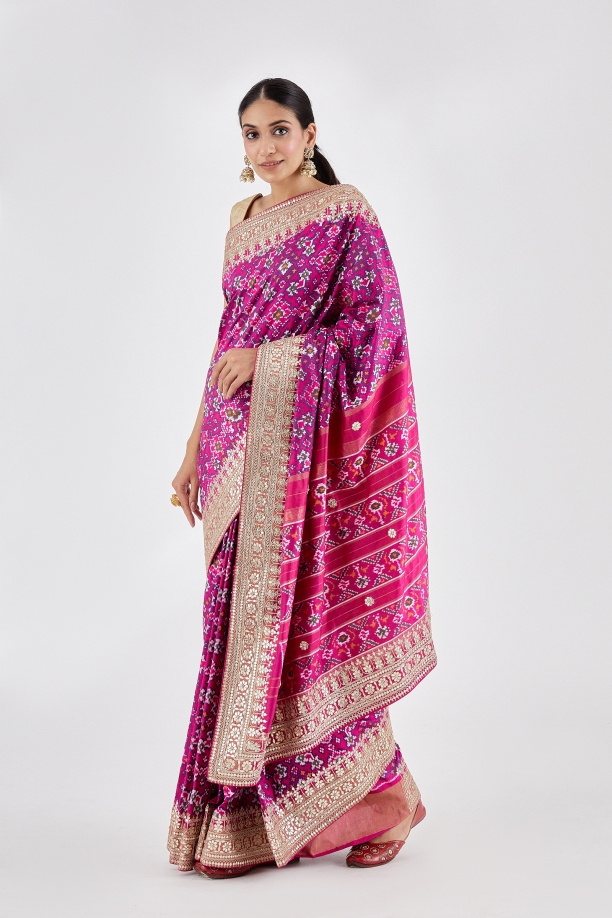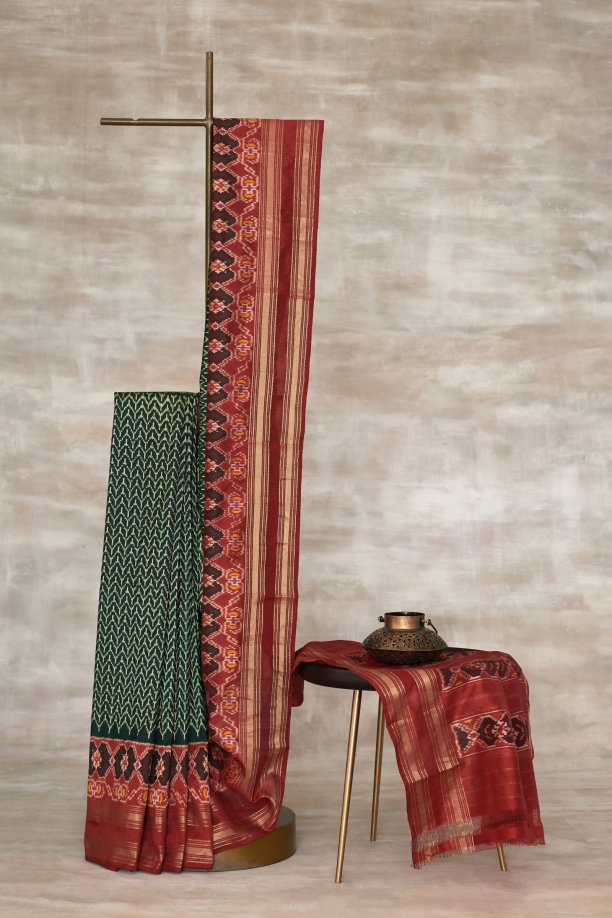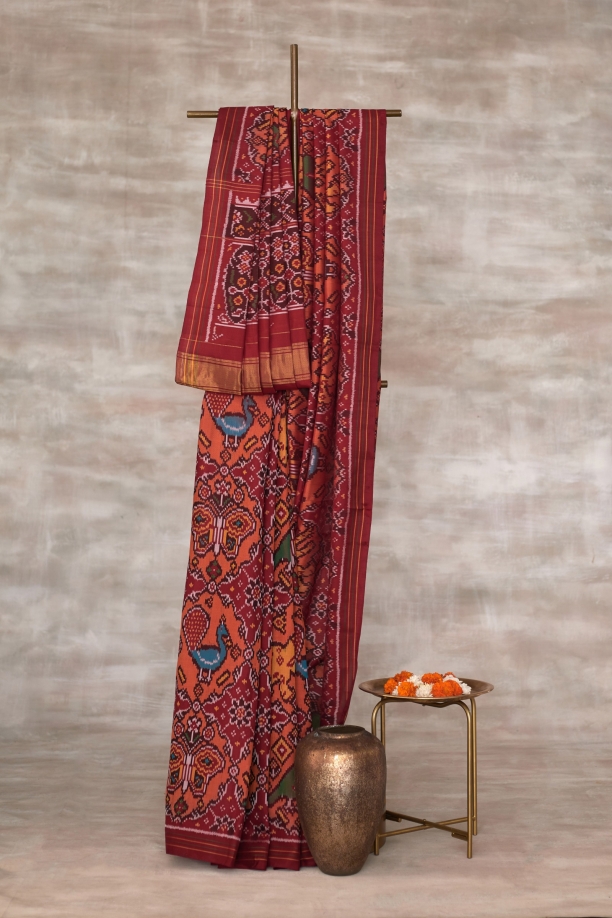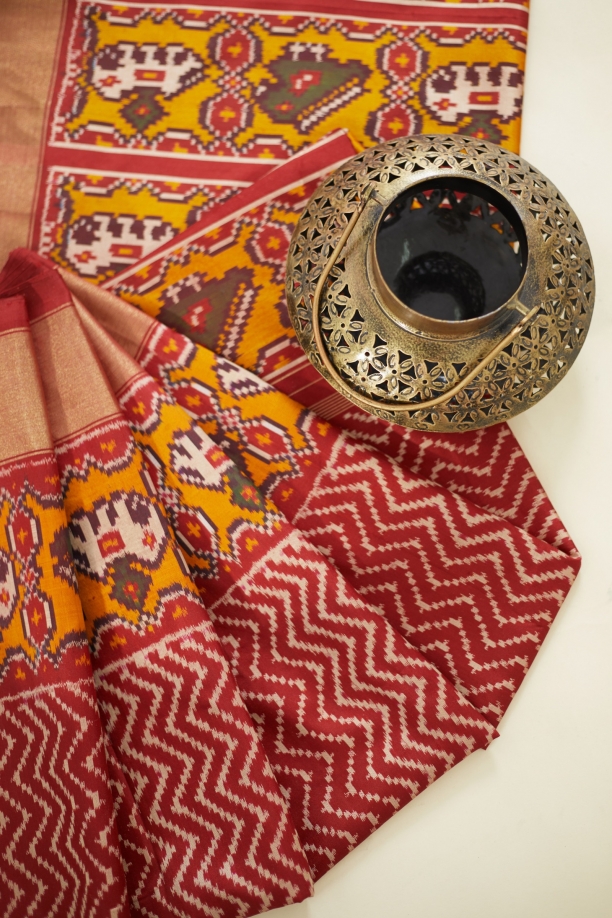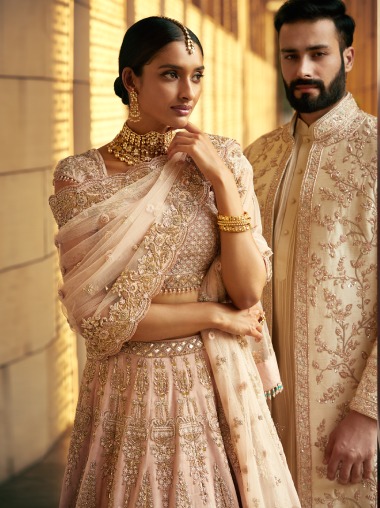Patan Patola
INTRICATE ARTISANARY OF A TIMELESS PATAN PATOLA
India is an ostentatious enigma of countless weaves and techniques embossed in cultural history. The handloom universe is a cluster of coveted textiles and heritage designs each unimaginably complex and unique. Many techniques are patent to the Indian sub continent and Patan Patola trumps as the most distinctive weave!
WHAT IS THE ORIGIN STORY OF A PATAN PATOLA WEAVE?
This weave borrows its name from Patan a town in Gujrat, India. The craft cemented itself to Patan which was once the capital of The Solankis, who once reigned famously in Gujarat about 900 years ago in the 11th Century. The weave was then symbolic to prosperity, good omen and luck. The king commissioned and brought along 700 weavers to Patan from Maharashtra to indulge in a New Patola everyday for his visits to the temple. The weave has remained unchanged since in technique and its popularity. The weave is also famously and commonly known as double ikat. Patan became the centre of these timeless weaves and still holds its place intact.
HOW IS A PATAN PATOLA SAREE MADE?
Patola sarees are well –acknowledged for their distinguishing geometric patterns crafted in vivid colours. These weaves are one of a kind for their reverse approach to weaving and dyeing. The warp- weft and resist dyeing is one of a kind, the process of curating a timeless patan patola is tedious, methodical and labour intensive. These vivid heirlooms are prized possessions of women since centuries for their sacred connotation and symbolism but also because of their beautiful uniqueness. These hand-woven wonders take several months of hard labour, persistence and attention to detail and precision. The final patterns are made on the silken yarns on the warp and weft giving it its signature – The double ‘Ikat’. Each yarn is meticulously tied and wrapped with threads of cotton as per the required pattern. With the intention of only dying the areas that remain exposed to the natural pigments commonly made out of flowers, vegetables, roots and barks or varied acid dyes. This exercise is repeated over months until the desired pattern is achieved this process is known as ‘Resist Dyeing’ and remains a very unique feature in the handloom saree universe amongst the other weaves. Once the dyeing is achieved the loom harnesses are prepared in these yarns to weave. The one of a kind tilted loom structure is handled by two masters of the craft who work in calculative collaboration of weaving with their tools for perfect alignment. These planned designs feature motifs of geometrical forms, florals, animals, birds, beetle leaves, moon etc. The double ikat is any connoisseur’s favourite for its unique process of resist dying the warp and weft yarns and Frontier Raas bring you these age old visions to cherish and indulge in.
WHAT IS THE DIFFERENCE BETWEEN SINGLE IKAT AND DOUBLE IKAT WEAVE?
“Ikat” refers to a technique that involves resist-dyeing the silk yarns before they are woven into timeless pieces. A Single Ikat – only the warp yarns are dyed whereas the weft yarns are left plain whilst weaving. While, in a Double Ikat –both the warp yarns and weft yarns are pre-dyed and woven precociously with umpteen skill and patience.
WHY IS PATAN PATOLA SO SPECIAL?
It is the most unique weave the sub-continent has to offer. Not only is the weaving process of the weave in reverse, but the weave can be worn both ways as a reversible, the confluence of pre dyed warp and weft makes both the sides of a piece wearable! The one of a kind resist dye technique wherein the silk threads are pre-dyed in pigments over a span of months of tedious calculations and labour intensive task of tying each yarn and arranging in succession according to a plan of pattern on the rosewood loom. The technique has not altered with a span of almost 900 years, the technique and the motifs have relatively remained the same. The vivid colours and the splendid designs are another attractive trait of the woven yards.
BUY A PATOLA SAREE TODAY AND EXPLORE OTHER WEAVES WITH FRONTIER RAAS
Frontier Raas brings you a trove of woven treasures, an exquisite selection of patterns and techniques from the proverbial looms; preserving and embracing the craft of woven art through centuries.
Indulge in a meticulously woven silk saree and crown your collection of sarees with yet another masterpiece. Resist dying is very unique to India with leheria and bandej saree being the most loved and popular amongst the women. Our latest saree design of bandhani saree feature meenakari inspired work a perfect concoction of tie- die techniques and embossed opulence. Our new saree collection offers drape saree in vivid textures, colours and contemporary styles, a readymade saree is super functional without compromising with style. Frontier Raas brings you a splendid collection of printed saree illustrated with floral to abstract motifs on premium fabrics such as printed silk sarees, chiffon sarees, organza sarees, and cotton sarees! .Explore Frontier Raas’s vast selection of handloom sarees ethically sourced from the generational Handloom clusters of India featuring timeless banarsi saree, kanjivaram, ajrarakh, ikat, paithni, patola silk saree and more! The House of Frontier Raas brings you the Raas Saris of India.





